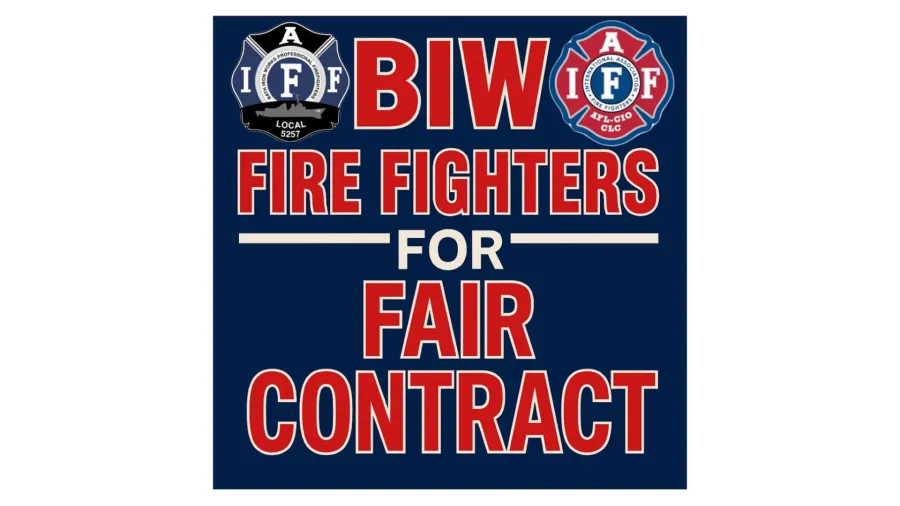BIW Firefighters Are Fighting for a Fair Contract

After a rough start, negotiations between the Bath Iron Works Professional Firefighters, IAFF Local 5257 and BIW are back on track as the two parties’ bargain over a new contract.
“We're going into intense negotiations for three or four days straight,” said the union’s chief negotiator Michael Crouse of the Professional Firefighters of Maine. “Our goal is to come to an agreement that strengthens health and safety for fire fighters and compensates them fairly for the critical emergency services they provide.”
Crouse said his members are seeking to bring their wages up to be commensurate with other private and public sector fire departments, but safety is also paramount. He said they want to make sure that their staffing, equipment and fire apparatus are replaced and maintained in accordance with National Fire Protection Association (NFPA) standards. In addition, the firefighters want the company to ensure their living conditions meet the level of their mission and responsibility.
“Our members just want equal pay for equal work,” said Crouse. “Currently, custodians at the yard are earning more than a Firefighter/EMT basic. The company has got to understand the level of responsibility that a firefighter and an EMS provider have. They may not be the guy who designs the boat, but they have to have a skill set, a knowledge base and a license to perform their duties to protect those employees and facilities on the yard.”
He said the company has heard the firefighters loud and clear that protecting public safety impacts production at the yard. If the firefighters can't control and suppress a fire within a timely fashion, there could be a significant fire loss that impacts how the facility can meet its Navy contracts by causing delays and cost overruns. He pointed to the example of the massive fire on the USS Miami at Portsmouth Naval Shipyard in 2012. But the role of the BIW firefighters is much more than putting out fires.
“We're not just the guys sitting in shiny red truck waiting to put the wet stuff on the red stuff,” said Crouse. “Industrial facilities are a lot more hazardous than a residential homes. There are a lot more dangers, toxic chemicals and structural differences that make it more challenging.”
